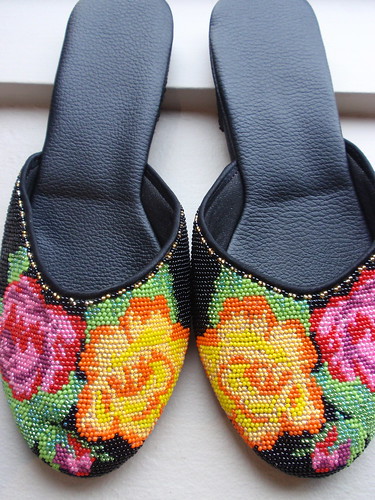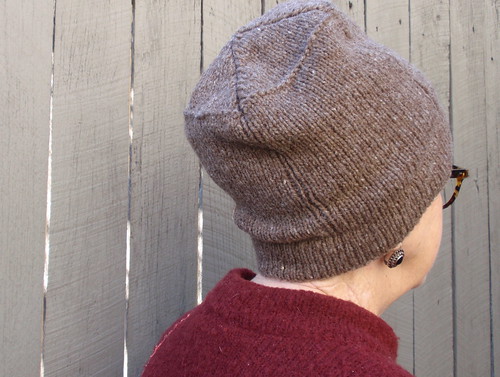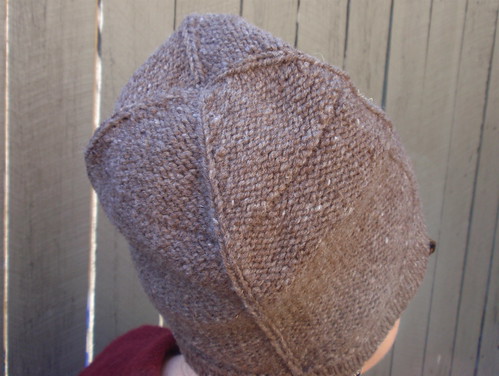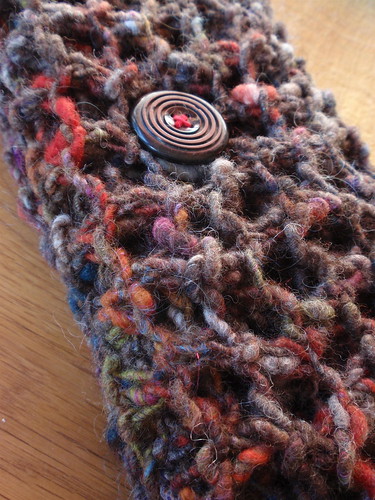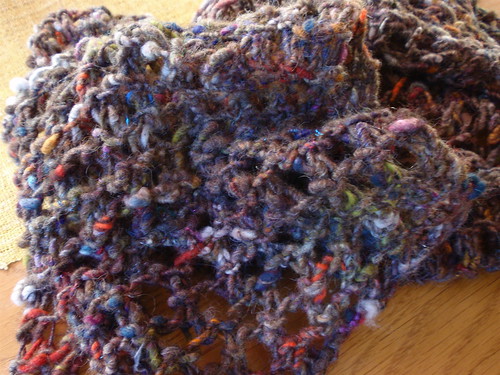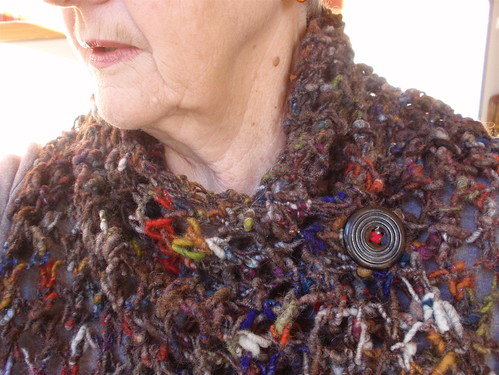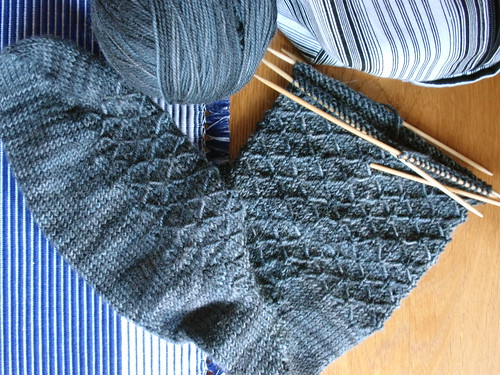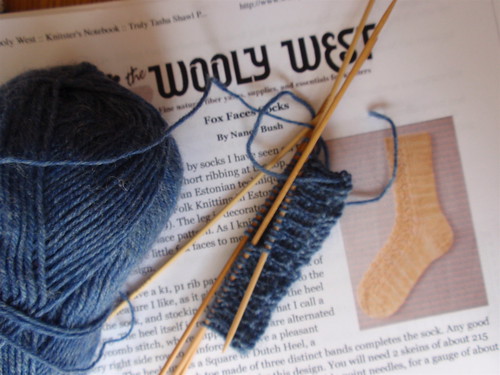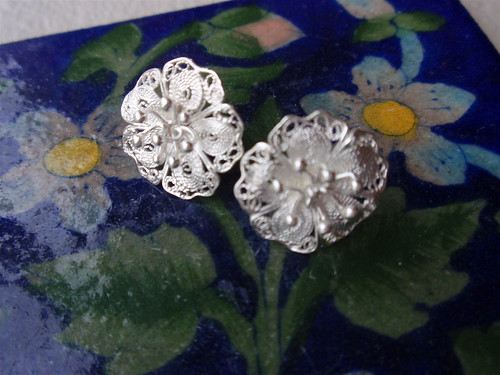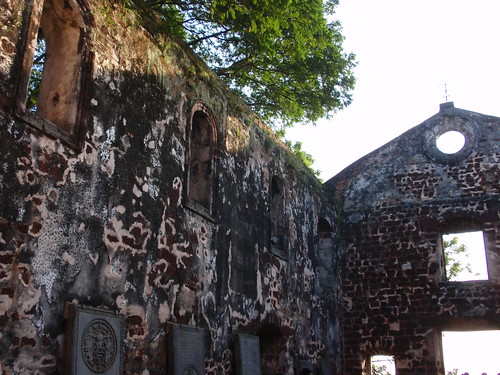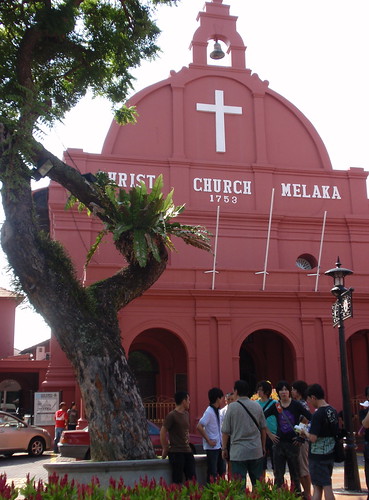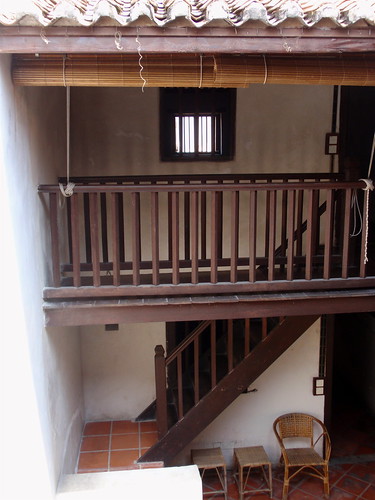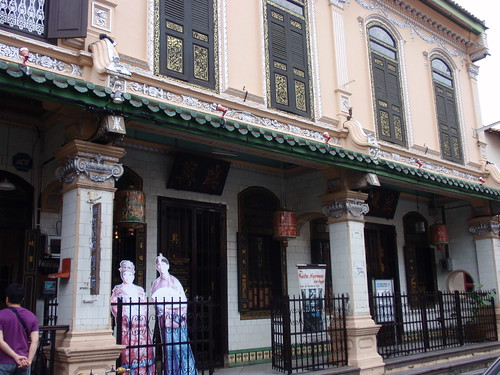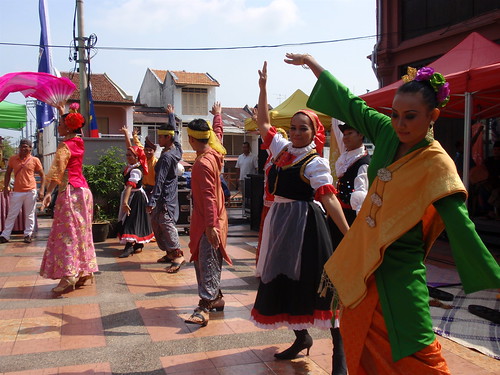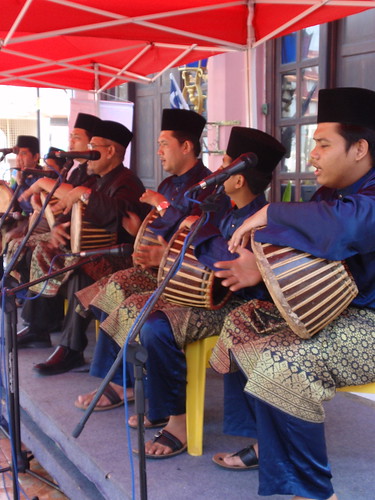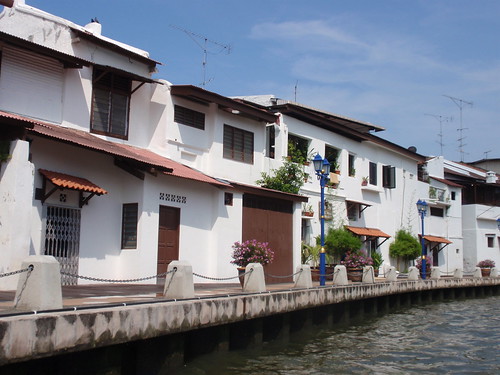I'm now home and feel a need to capture some of my final impressions of my time in Malaysia, so I'm revisiting what I did for
my Paris trip early last year and risking a list of the five best things - or at least, the things that gave me most pleasure.
1 The first is a bit complicated - it's
Malaysia's cultural diversity. I feel that if you were going to create a nation state, the Malaysian model would be one of the riskiest you could choose. The state is made up of people with distinctly different cultural, religious and language backgrounds, where the differences have been fostered and cherished for generations. No effort is made to integrate the groups - in fact, intermarriage is often explicitly discouraged - and there's positive discrimination in favour of Malays and Islam, but nevertheless everyone is expected to buy into the notion of '1 Malaysia', and to a large extent, everyone does. Nowhere is this diversity more immediately obvious than in the number and range of religious edifices.
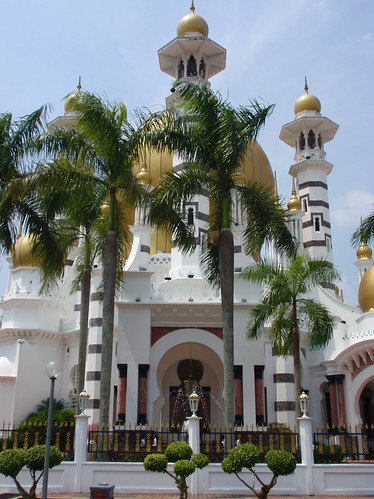

 [The exquisite Ubudiah Mosque in the royal town of Kuala Kangsar where we were allowed (as modestly clad women) even into the central domed prayer hall]
[The exquisite Ubudiah Mosque in the royal town of Kuala Kangsar where we were allowed (as modestly clad women) even into the central domed prayer hall]
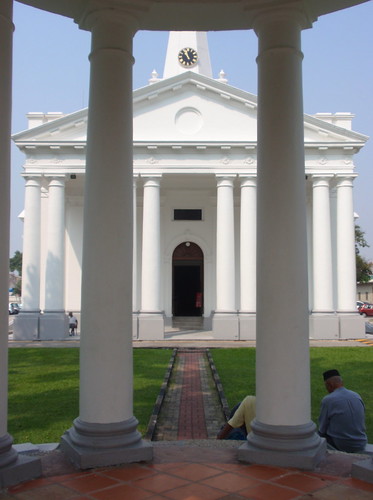 [The elegant 1817 St George's Church in Georgetown, Penang - supposedly the first Anglican church built in Southeast Asia.]
[The elegant 1817 St George's Church in Georgetown, Penang - supposedly the first Anglican church built in Southeast Asia.]
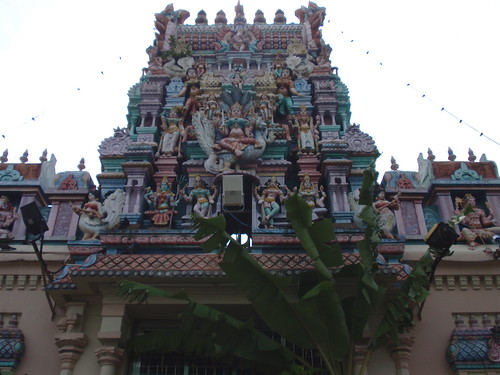 [The 1883 Sri Mariamann Hindu Temple in Georgetown, Penang, proudly maintained by its generations old Indian community]
[The 1883 Sri Mariamann Hindu Temple in Georgetown, Penang, proudly maintained by its generations old Indian community]
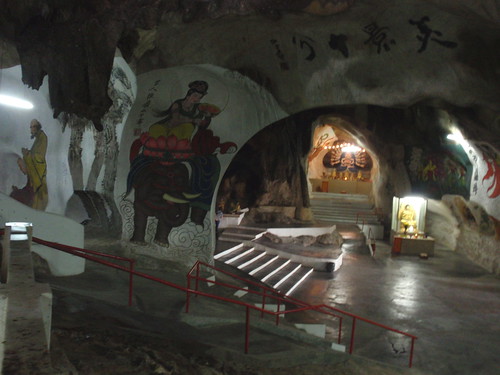

[Buddhist Chinese Perak Tong Temple near Ipoh - built into an immense limestone cave]
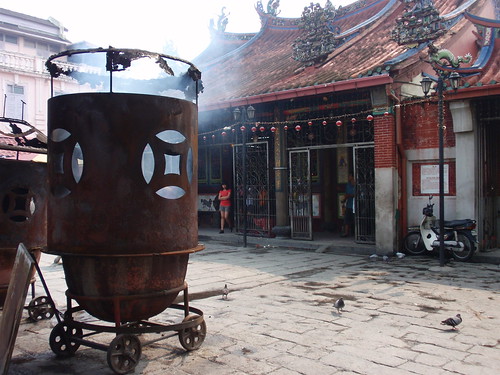
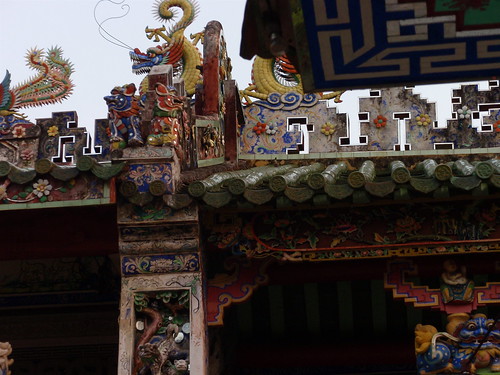
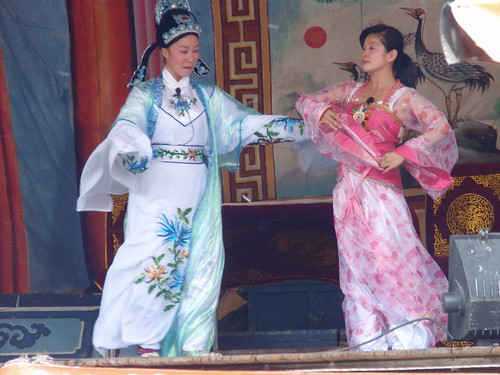
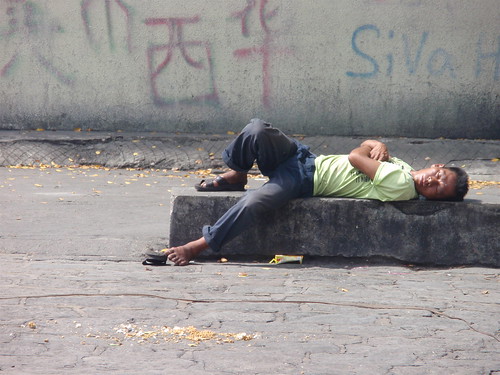 [The early nineteenth century Taoist/Confucian Goddess of Mercy Temple in Georgetown, Penang. This is my favourite. I call it the Temple of Chaos. It's full of people all the time, burning incense, burning candles, burning "pretend' paper money. Smoke and bowing everywhere in every direction. For no apparent reason there was a stage in the temple forecourt and a performance of Chinese opera. People sitting, chatting, eating, sleeping. Chaos]
[The early nineteenth century Taoist/Confucian Goddess of Mercy Temple in Georgetown, Penang. This is my favourite. I call it the Temple of Chaos. It's full of people all the time, burning incense, burning candles, burning "pretend' paper money. Smoke and bowing everywhere in every direction. For no apparent reason there was a stage in the temple forecourt and a performance of Chinese opera. People sitting, chatting, eating, sleeping. Chaos]
2
The natural world. Anybody who knows me knows that I'm not a great fan of 'nature'. I'm usually much happier in the built environment that I am in the natural one. But Malaysia's natural world is so much larger than life - so bright, colourful and exuberant. I've
already posted about the wonderful wild life of Sarawak and Sabah - so definitely worth the visit - but even in a big city such as Kuala Lumpur there are wonderful parks and gardens. We particularly loved the butterfly park in KL with the sheer delight of being surrounded by hundreds and hundreds of fluttering butterflies:
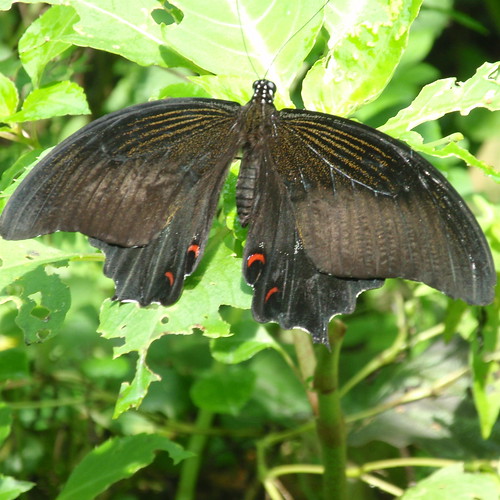
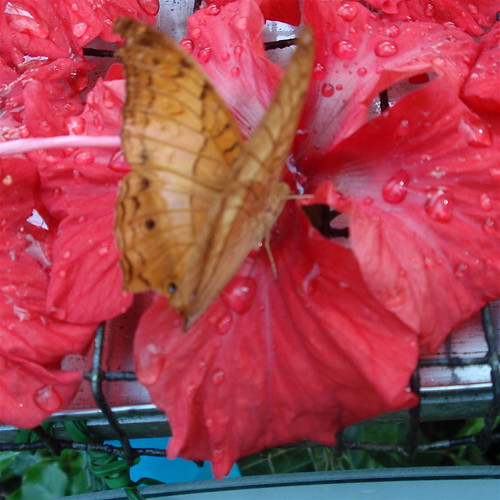
and, at the risk of boring you with yet more photographs of orchids, we were overwhelmed by the profusion and colour and variety of the plantings in the KL orchid garden:

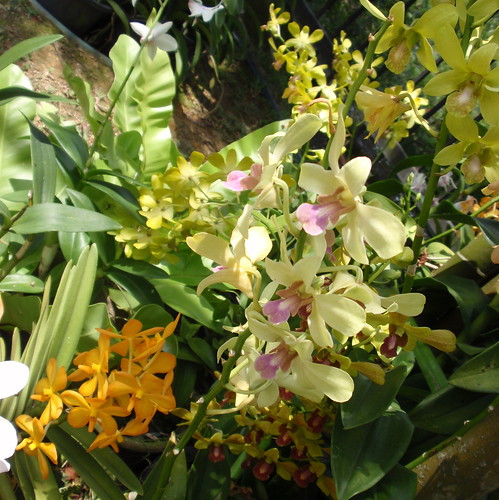
3
The food. You quickly learn that in Malaysia, almost everything will taste wonderful. It may astound you with its chilli sharpness, but it will have a very fresh, complex flavour. Lots of ginger, lots of lemon grass, coconut milk, a coriander-like herb and everything so fresh. There are, of course a few exceptions to the tasting wonderful rule - durian and jackfruit whose decadent tropical taste I can't bear, and fish paste which I happen to like, but which can be overpowering in larger quantities. There were lots of different presentations of laksa with local variations as we travelled around, and my favourite comfort food Hainanese Chicken Rice. We had afternoon tea at a grand hotel and discovered it came with a particular Malaysian twist - finger sandwiches and petit fours, accompanied by satay, samosas and chicken pies:
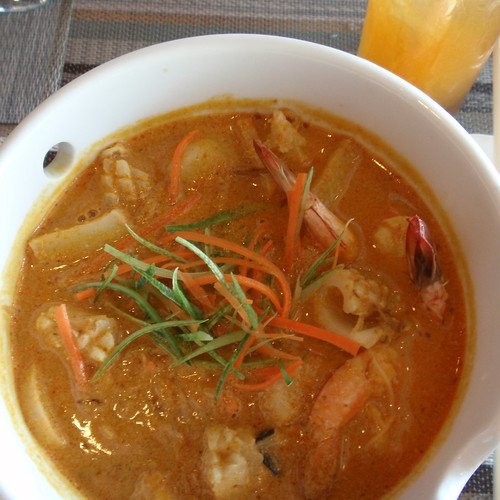
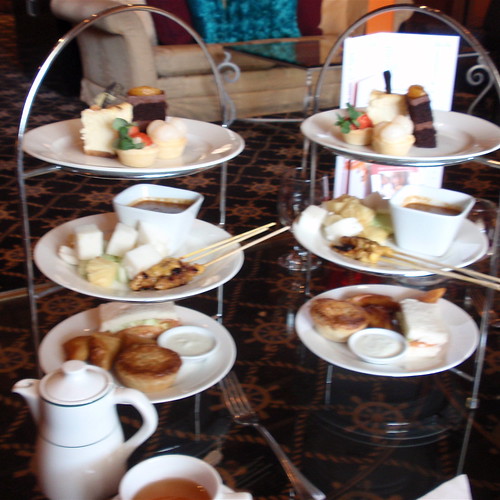
And of course there was the kek. Lots of kek. The keks ranged from the Nyonya specialities of cakes made from glutinous rice and palm sugar, through wonderful pastries and such things as very good banana kek, to the most astounding kek lapis we found in Kuching - extraordinary constructions of fine layers of kek to form almost op-art patterns.
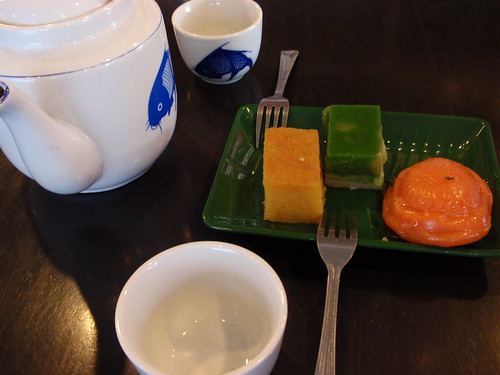

4
The architecture. I knew I would be attracted by the traditional wooden architecture of Malay houses - whether it is the simplicity of kampung (village) houses or the intricate grandeur of such structures as the early twentieth century Istana Kenangan (now a museum) at Kuala Kangsar - completely constructed without nails.
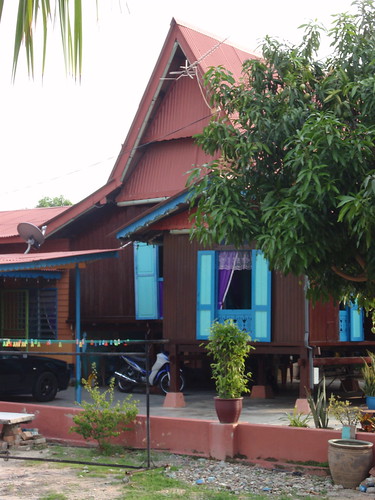
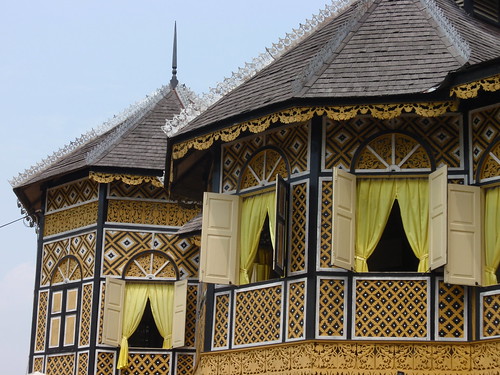
I also knew I'd see some wonderful colonial architecture such as the 1917 Railway Administration Building in Kuala Lumpur and the Town Hall in now-neglected but once-grand Ipoh
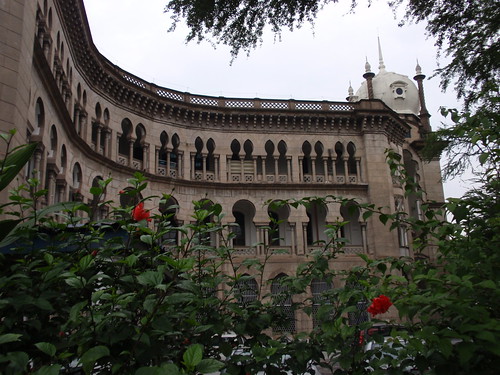
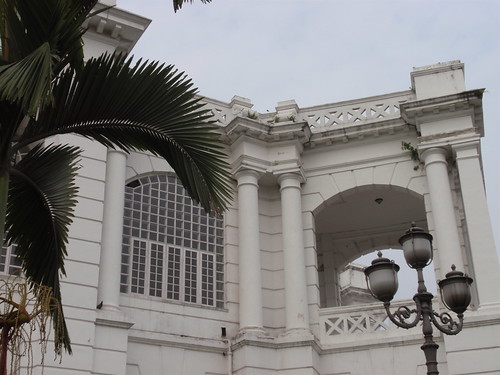
and the shophouses and grand Chinese merchant houses of Penang.
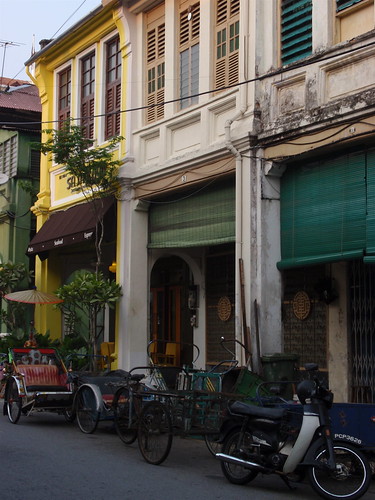
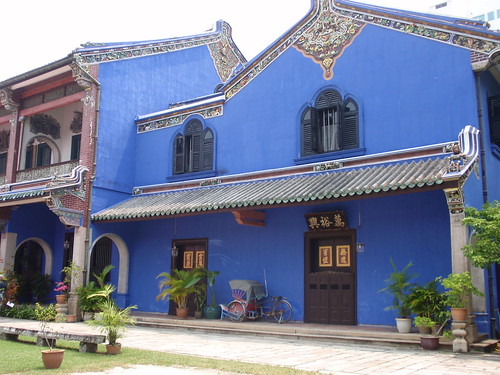
What I hadn't expected was to be bowled over by some of the modern architecture. The much-famed Petronas twin towers are much more beautiful than I had anticipated. Even though structurally they're built from concrete, the external cladding glitters metallicly. They're reminiscent of the modernity of New York's Chrysler Building. We were fortunate to have them as part of the view from our hotel window in KL where at night they looked like two glittering upended chandeliers.
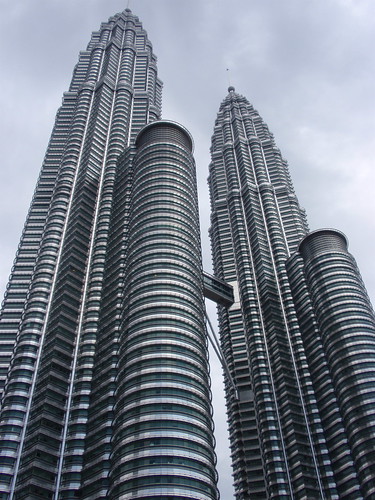
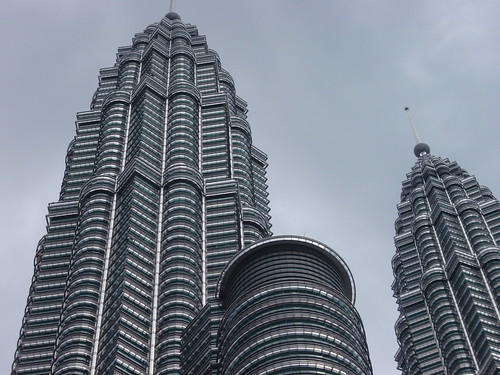
Just as beautiful though not so immediately impressive is the elegant Dayabumi complex that integrates Islamic design elements with modern skyscraper architecture.
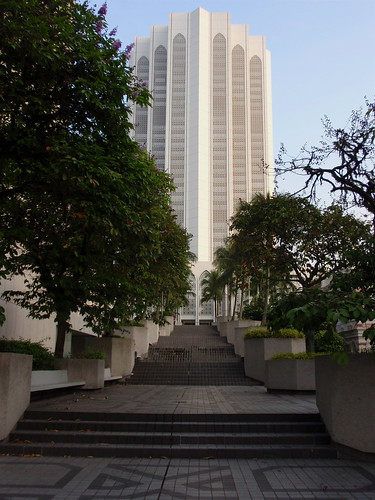
And then there was the building whose interior really stole my heart - the Museum of Islamic Arts Malaysia. This is one of the most wonderful museums I've ever visited. Precious and beautiful displays of pottery, textiles, furniture and objects from Islamic countries around the world, along with finely hand-written and decorated, centuries old religious books and scrolls. It's rare to see so many exquisite things grouped together so well and displayed in such a fitting space. Definitely worth a visit.

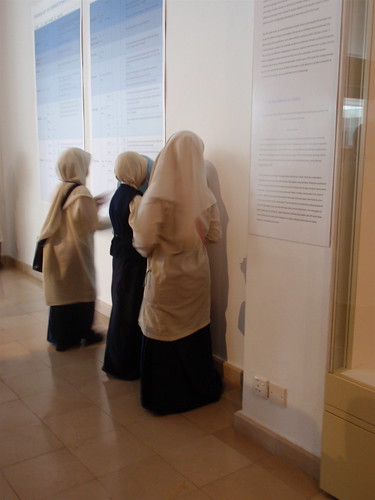
5
The taxi-drivers. I expect like most travellers, I'm very suspicious of taxi-drivers when I travel, but in this case I've decided that taxi-drivers are one of the unacknowledged treasures of Malaysian tourism. Given the limited time we had in each city we visited, and sometimes the fact that there was no readily accessible alternative, we used taxis quite a bit on our trip. Even though meters were rarely used, we didn't have a single case where the fare quoted by the driver was more than marginally different from what our guidebooks or hotel had suggested or, if meters were used, where the metered and unmetered fares were different. But as well as their trust-worthiness, the taxi-drivers were an invaluable source of advice and information - often they became either formal or informal guides for bits and pieces of our sight-seeing.
We discovered that Malaysia has a compulsory retirement age of 55, so that a number of our drivers were retired civil servants or business employees who wanted to continue to work, and (we speculated) whose wives did not want them around the house. They were always knowledgeable about what to see or do, often willing to comment on or explain aspects of Malaysian society, and generally a very good source of information about the region.
So that's my list . Except for the very very hot and humid weather it was an excellent holiday. Malaysia is simultaneously fascinating and yet safe and easy for travellers. English is widely spoken, the food is safe as well as interesting and sophisticated, and you can even drink the water (well, I did, safely, at least). But we did set rather a cracking pace - or alternatively we're beginning to feel our age. Maybe we needed a few more 'quiet days'.
Terimah kasih, Malaysia
